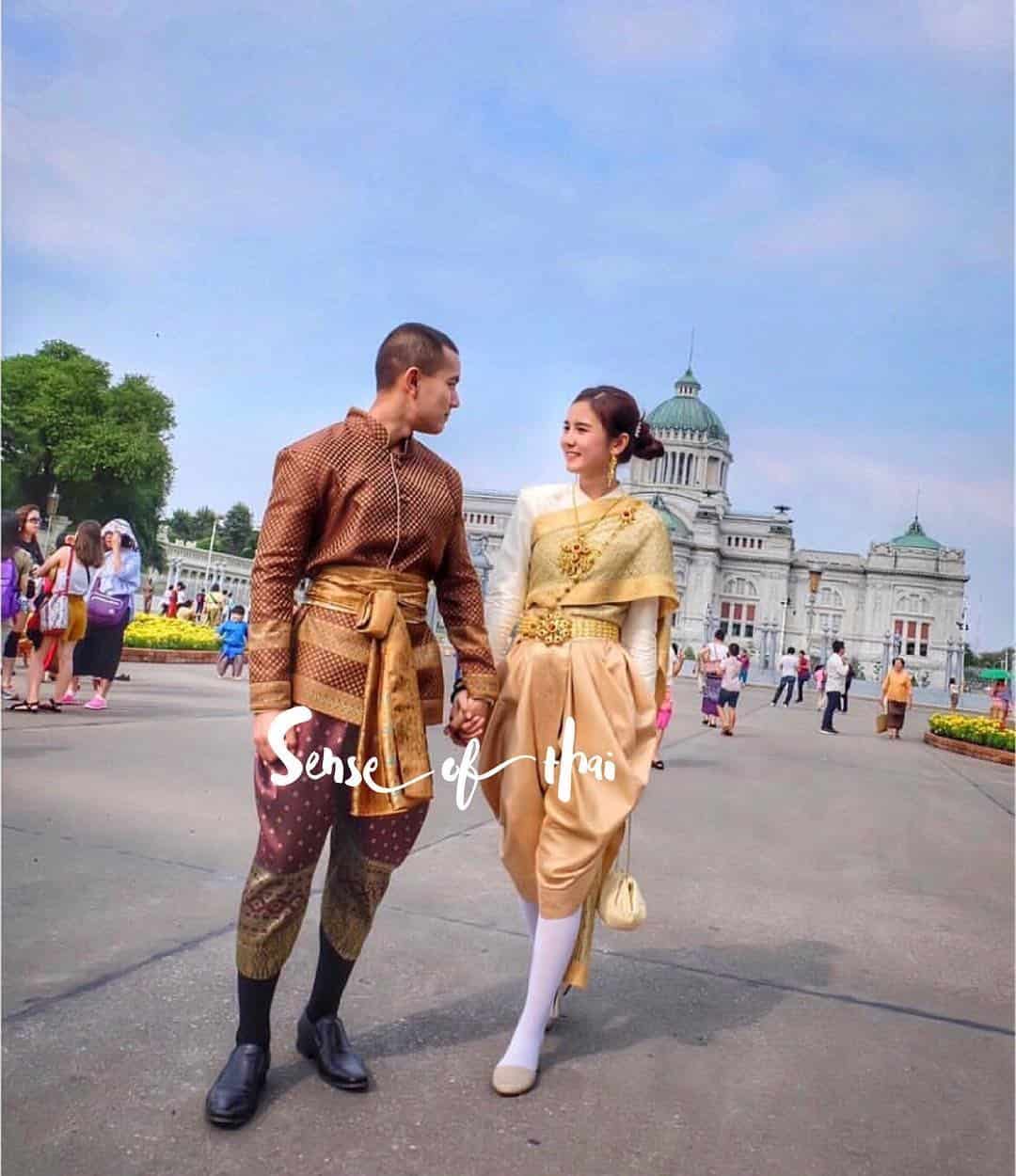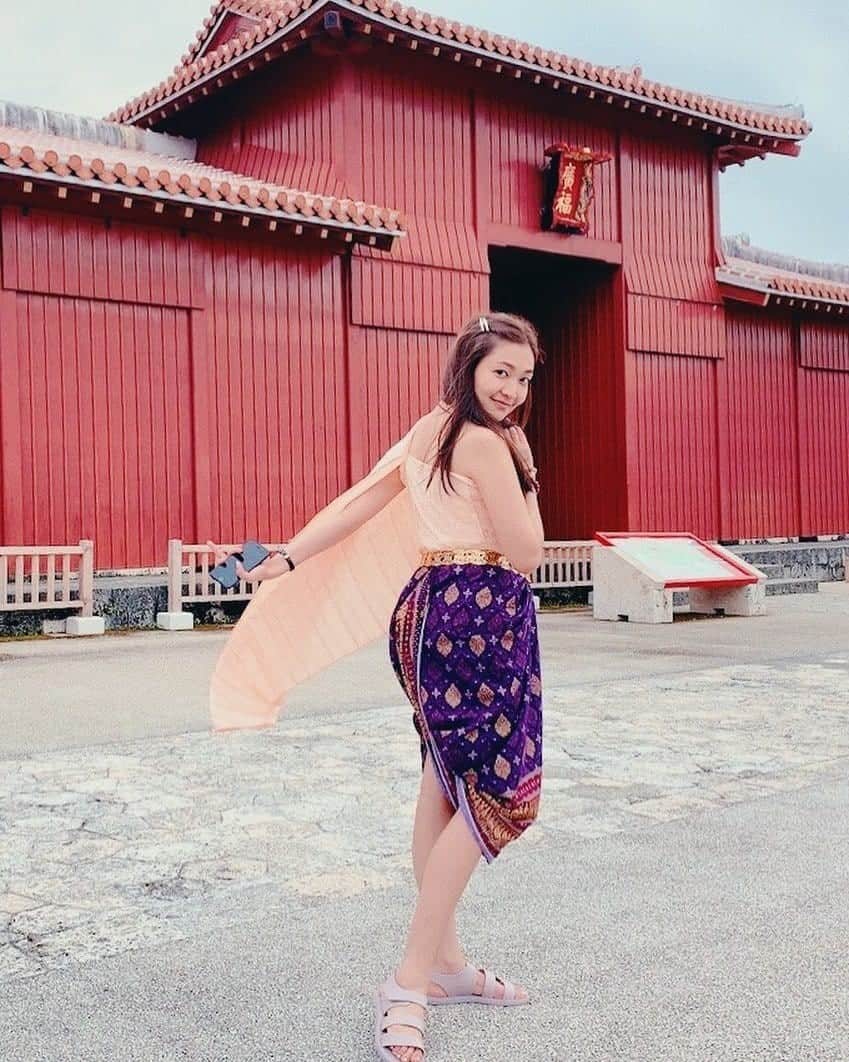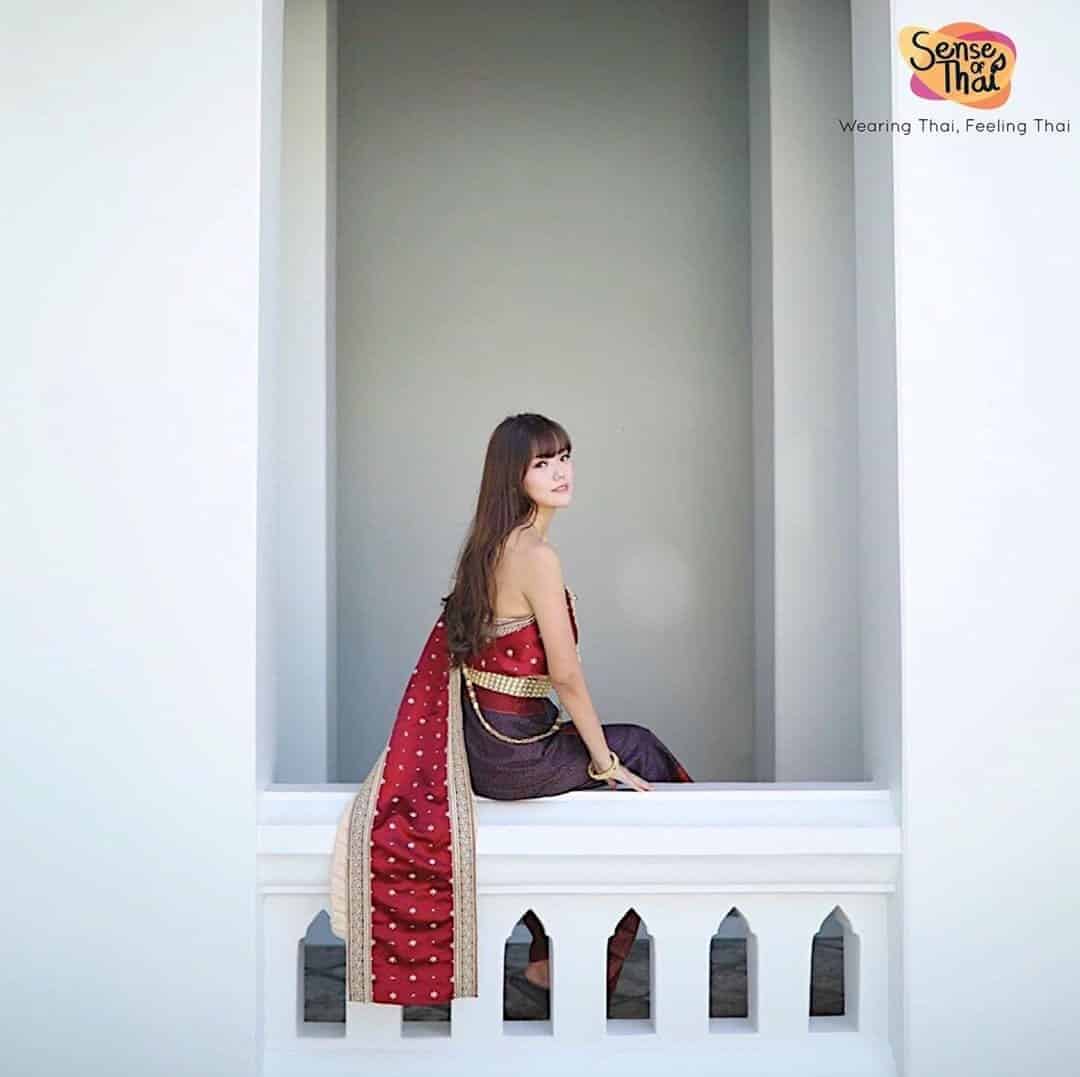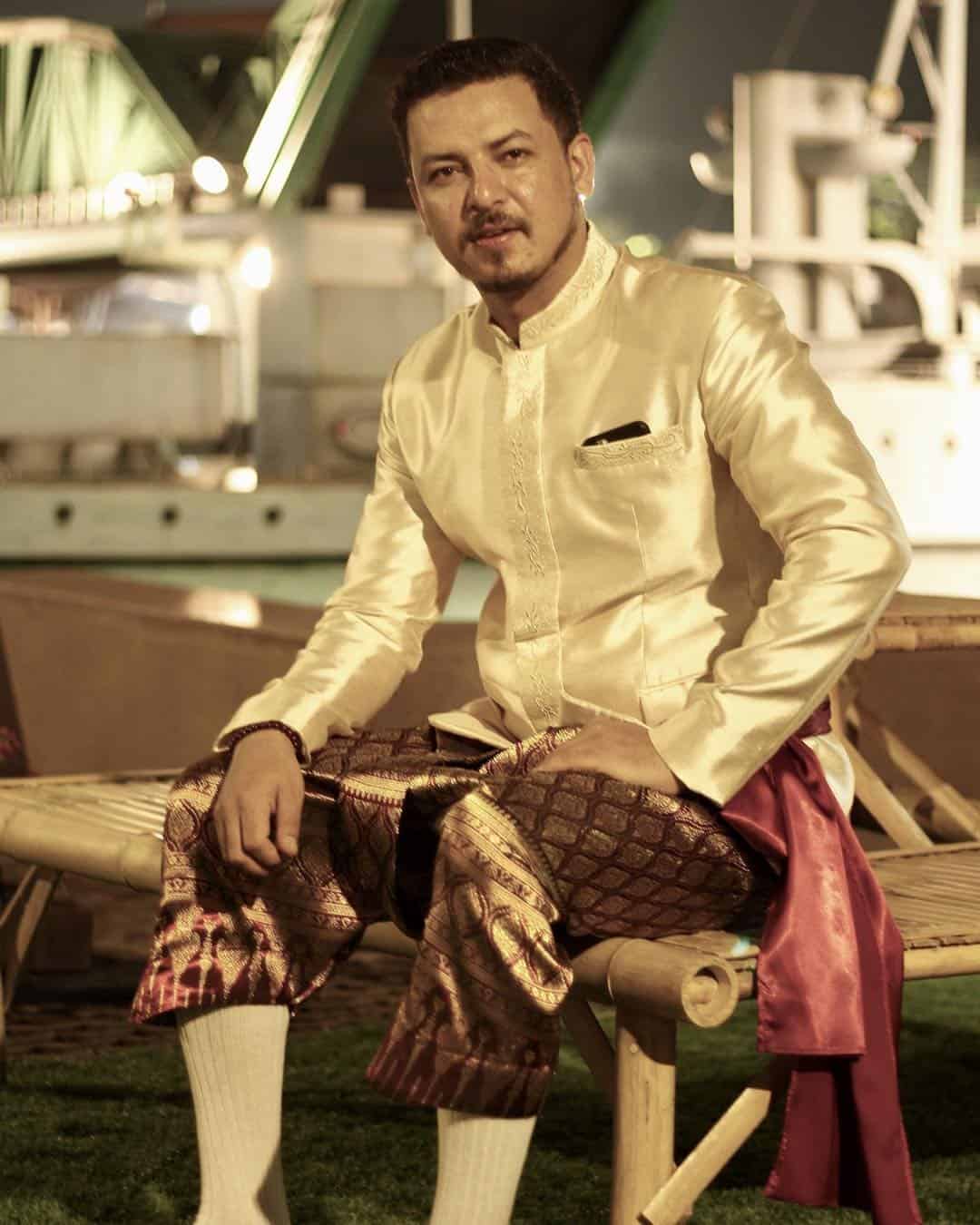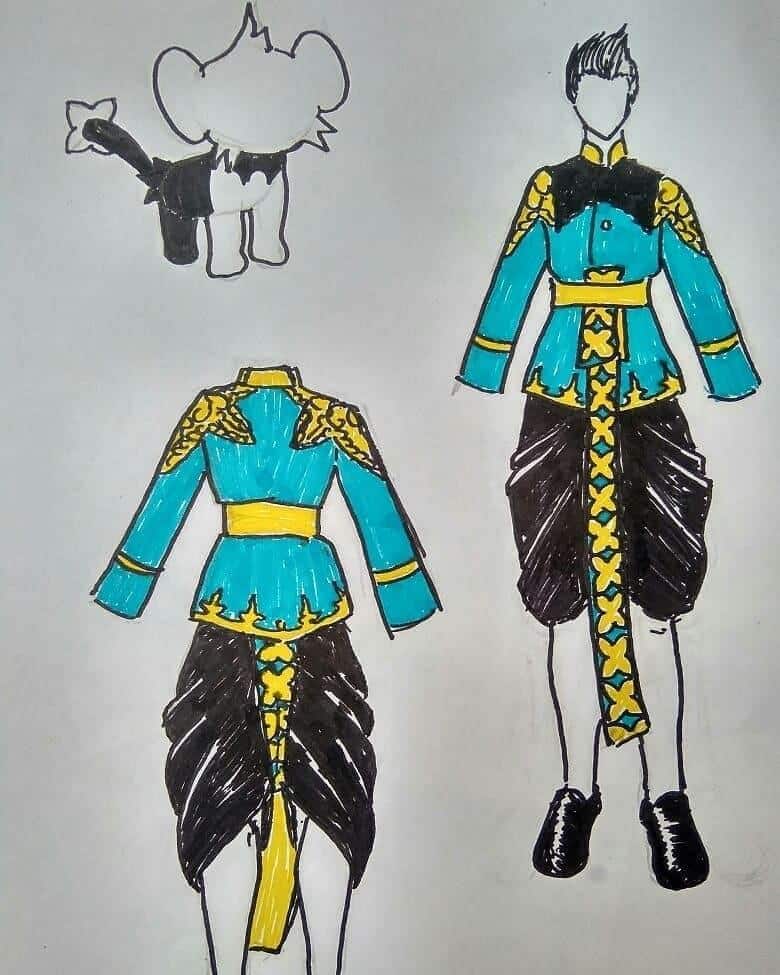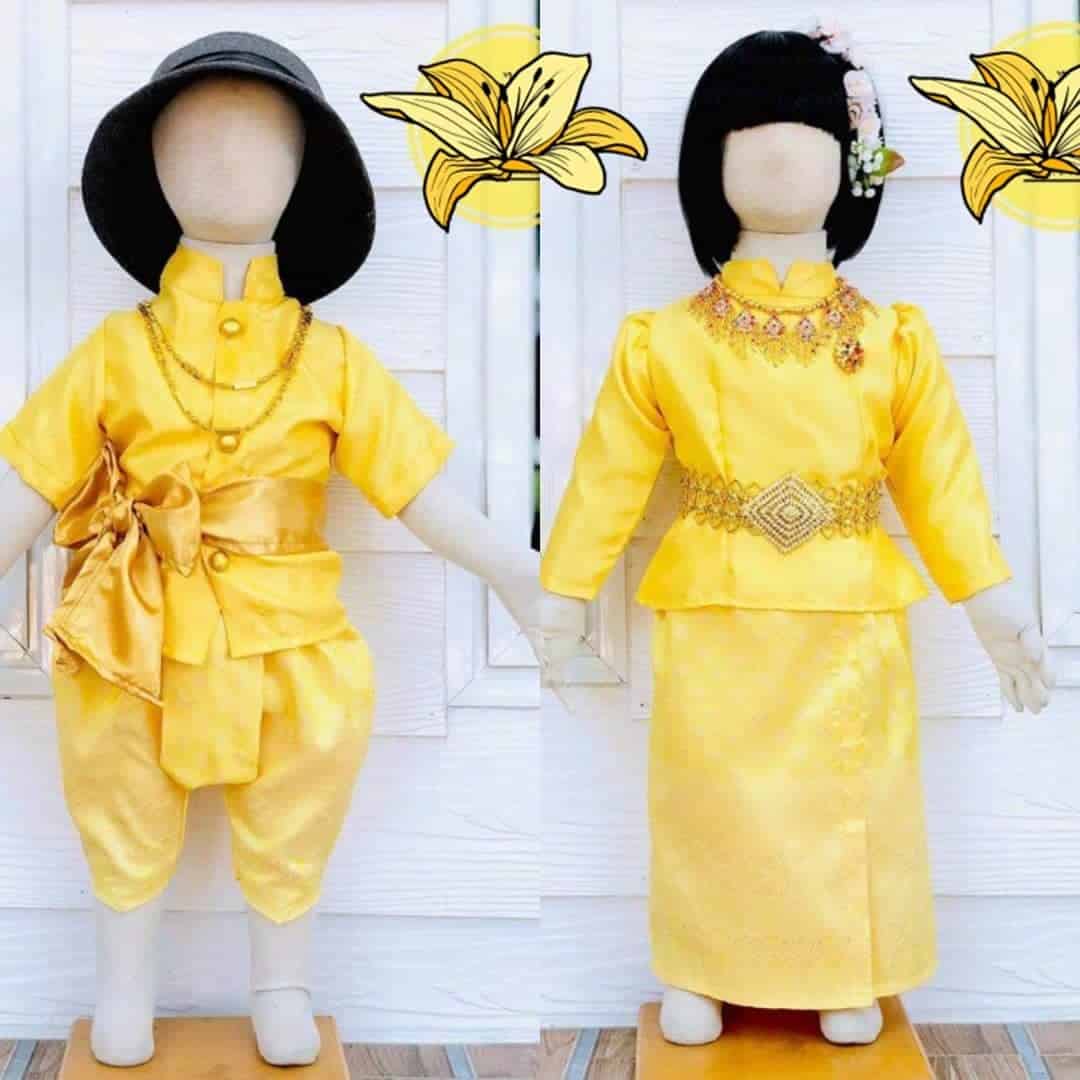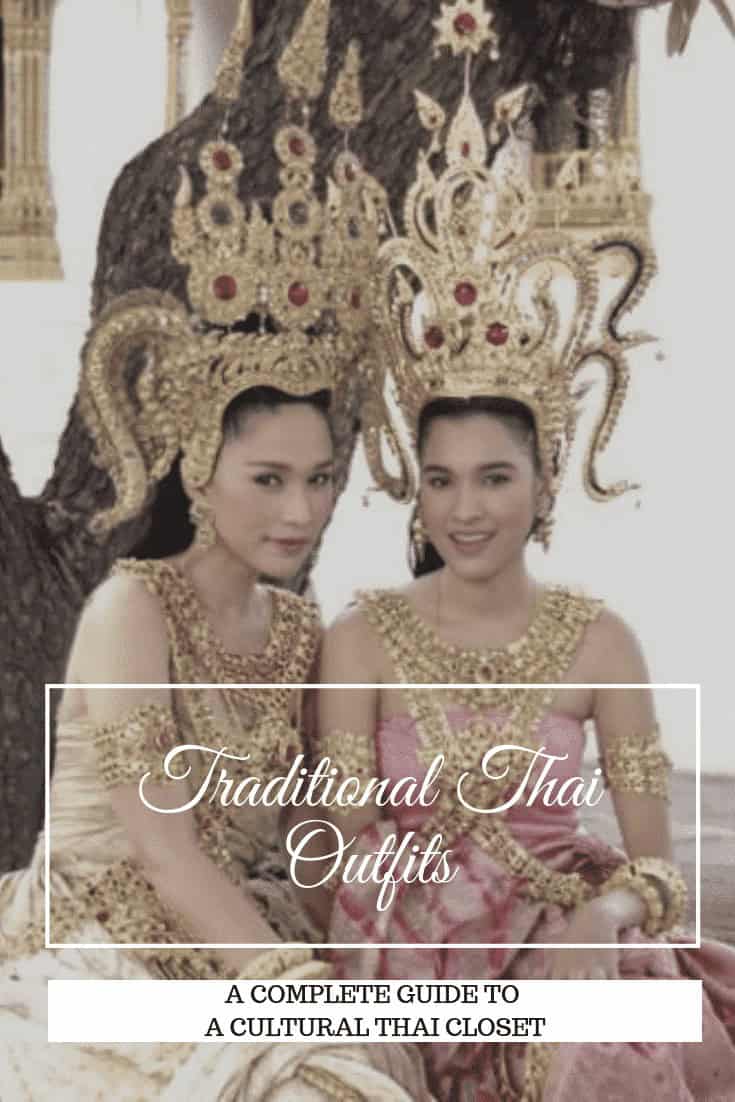In Thailand’s vibrant cultural landscape, traditional attire plays a significant role in showcasing the country’s rich heritage. Like its majestic temples, stunning beaches, and ancient sites, traditional Thai outfits are a major draw for tourists, captivating their attention with intricate designs and exquisite tailoring. Known as ‘chut thai,’ or Thai outfit, these garments are more than just a fashion statement – they’re an integral part of Thailand’s cultural identity.
The Complete Guide to Traditional Thai Outfits
Thailand’s cultural heritage is a vibrant tapestry woven across centuries, with traditions and values remaining strong despite modernization. The country’s reverence for its customs is evident in the temples, where traditional attire can be seen on special occasions, such as weddings and religious festivals. Beyond the spiritual realm, Thailand’s fashion scene offers a kaleidoscope of colors and textures, with traditional outfits like Pha Nung, Chong Kraben, Sabai, and Sinh being worn daily.
The significance of these garments extends beyond mere aesthetics, however, as they hold stories and symbolism that reflect the country’s rich cultural heritage. In this article, we’ll delve into the history and importance of Thai traditional clothing, demystifying the language and customs for those curious about this captivating culture.
↓ 13 – Pha Nung
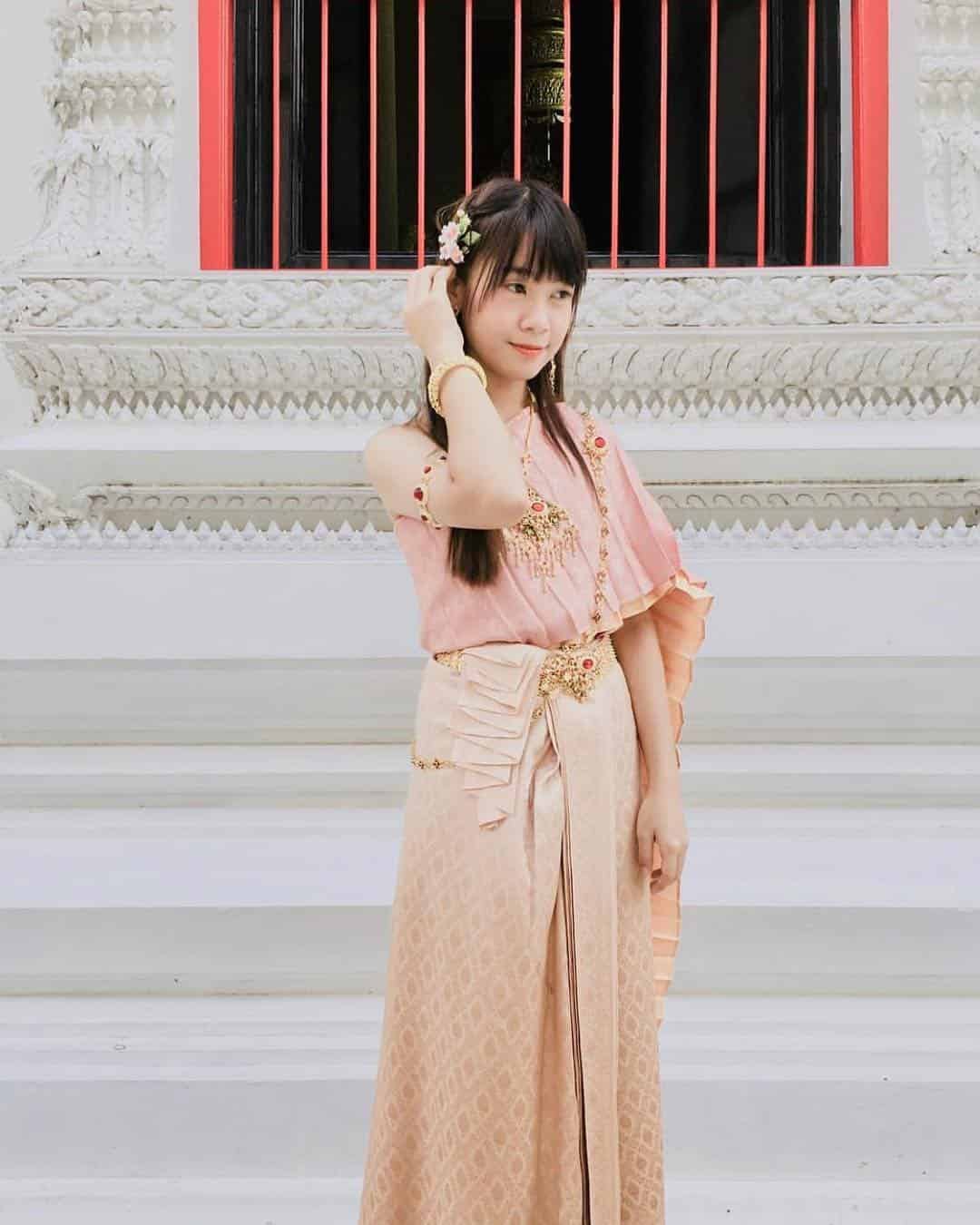
In traditional attire, one of the most ubiquitous and iconic pieces is the Pha Nung, also referred to as Panang or Panung. This distinctive garment consists of a wide cloth strip wrapped around the waist, extending below the knees to form a flowing bottom wear. Typically paired with a Pah Hom, it’s a staple in many traditional outfits. For added convenience, the cloth is often passed between the legs and secured at the back via the ‘Chong kraben’ technique, allowing for unrestricted walking.
The Pha Nung bears striking similarities to Sampot, a traditional Cambodian garment worn by both men and women. In fact, the average length of this ornate cloth is approximately 3 yards. Interestingly, the Pha Nung has been showcased at the prestigious Metropolitan Museum of Art, a gift from James H. W. Thompson in 1953, exhibited in 1972. For a fascinating exploration of traditional garments from around the world, I invite you to peruse our earlier post on Korean attire.
↓ 12 – Steps to wear a Pha Nung
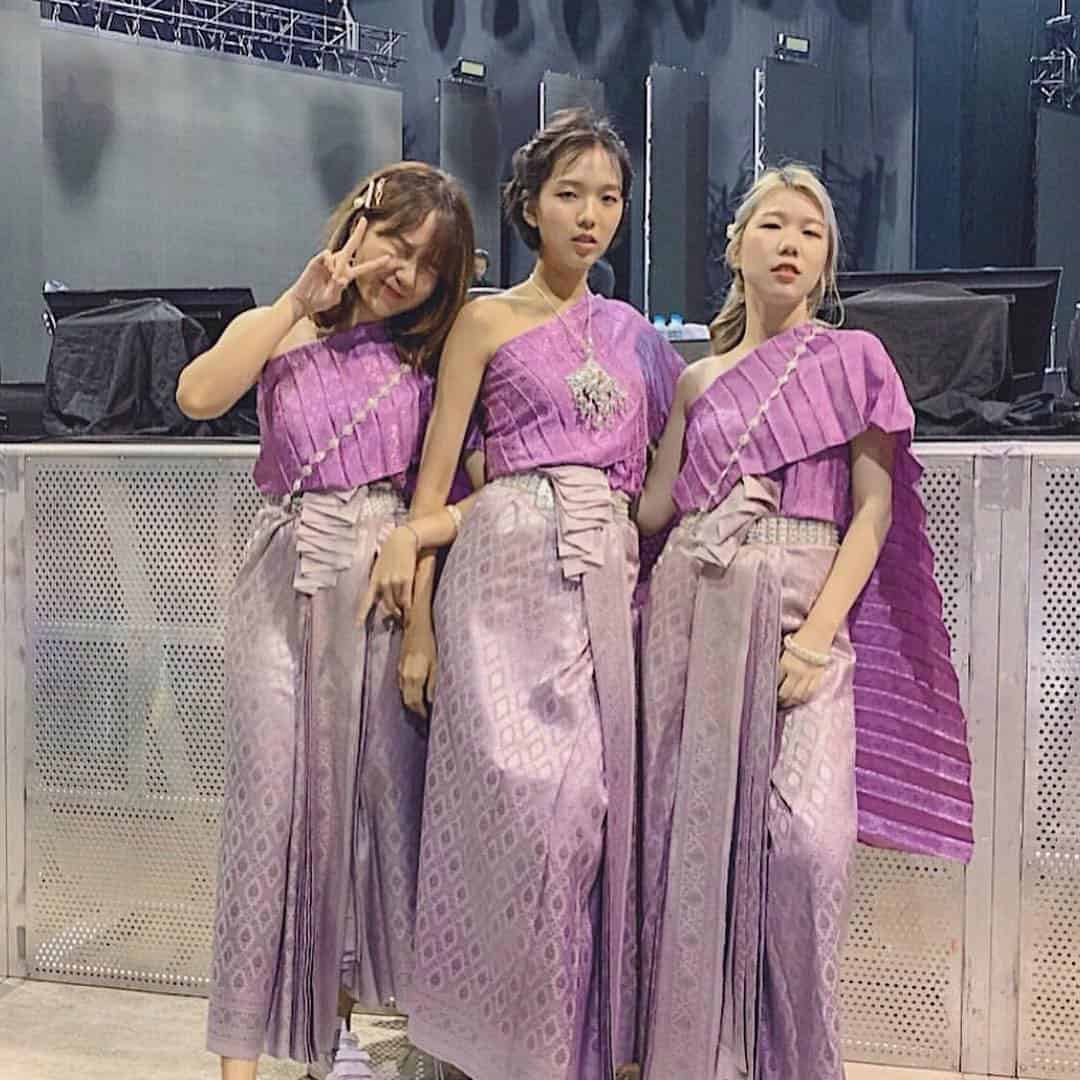
To create a traditional Vietnamese Pha Nung garment, you’ll need a 3-yard long piece of cloth with a width that’s at least equal to your leg span. The length should be four to five times the width. Having friends assist you in dressing up is highly recommended, as reaching the back can be challenging when tying the Pha Nung. Start by wrapping the cloth around your waist, ensuring it’s evenly distributed and the middle half of the sheet is secure.
Then, tie a knot at the center, making sure the cloth is tight around your midsection. Hold the top corners to prevent the garment from slipping down. Next, extend the ends from the knot and align them parallel to each other. Fold the cloth together in a series of small, even folds – approximately as wide as a hand – alternating between left and right sides until you reach the bottom edge of the fabric. Repeat this process until the entire sheet is folded.
Once you’ve reached the end, flatten the folded section and roll it inward at least twice to secure the folds in place. A helping hand or a needle can be useful in keeping everything in check. Then, move all the folded sections from between your legs to the back of the garment. Drape the fabric evenly on either side, aiming for symmetry to achieve a neat and polished look. Finally, secure the Pha Nung around your waist using an elastic band or girdle if needed.
↓ 11 – History Behind Chang Kben
The legendary Pha Nung, also known as Chang Kben, has a rich history that dates back to Cambodia. According to Khmer elders, the garment was inspired by the Indian Dhoti and was worn by ancestors who followed Hinduism, which was prevalent in India at the time of the Khmer Empire’s rule. The fabric is said to symbolize bravery, brilliance, and power, and when worn with a tail dropped at the back like Hanuman’s monkey tail, it serves as a tribute to this mythical figure.
Interestingly, Chang Kben has been adopted not only by Thai people but also by Tamil people in South India and Khmer people, remaining a staple till today. As the Sukhothai Kingdom and Lan Xang prospered during the mid-13th century, Thai and Lao people began to incorporate Sampit Chang Kben into their festivals, ceremonies, and royal events. It became a coveted garment for palace dwellers, including royalty.
Initially reserved for males, the Sampot Chang Kben has more recently been adopted by women as well, particularly for formal occasions and celebrations. In fact, Khmer brides and grooms often wear it on their wedding day.
↓ 10 – Sabai
In Southeast Asia, a traditional garment called Sabai, also known as ‘phaa biang’, is worn to cover the chest, offering a unique blend of style and cultural significance. While often associated with women’s attire in Thailand and other countries, Sabai is not exclusive to females – men in Laos don it on special occasions like weddings and religious events, typically featuring checkered patterns.
The fabric typically measures one foot wide, draping diagonally over the shoulder like a sash, leaving the opposite shoulder bare. This design draws inspiration from the Indian Sari, but with one key difference: whereas a sari is worn with a blouse, Sabai often goes without.
Its origins can be traced back to the 1st century AD during the Funan era, where legend has it that Preah Thaong and Neang Neak, the founders of the Kingdom of Funan, were inspired by the tale of Naga’s princess tail, which symbolized Sabai. This mythological connection has also influenced the wedding custom where the groom must cling to the bride’s Sabai as they enter their honeymoon suite.
↓ 9 – Suea Pat
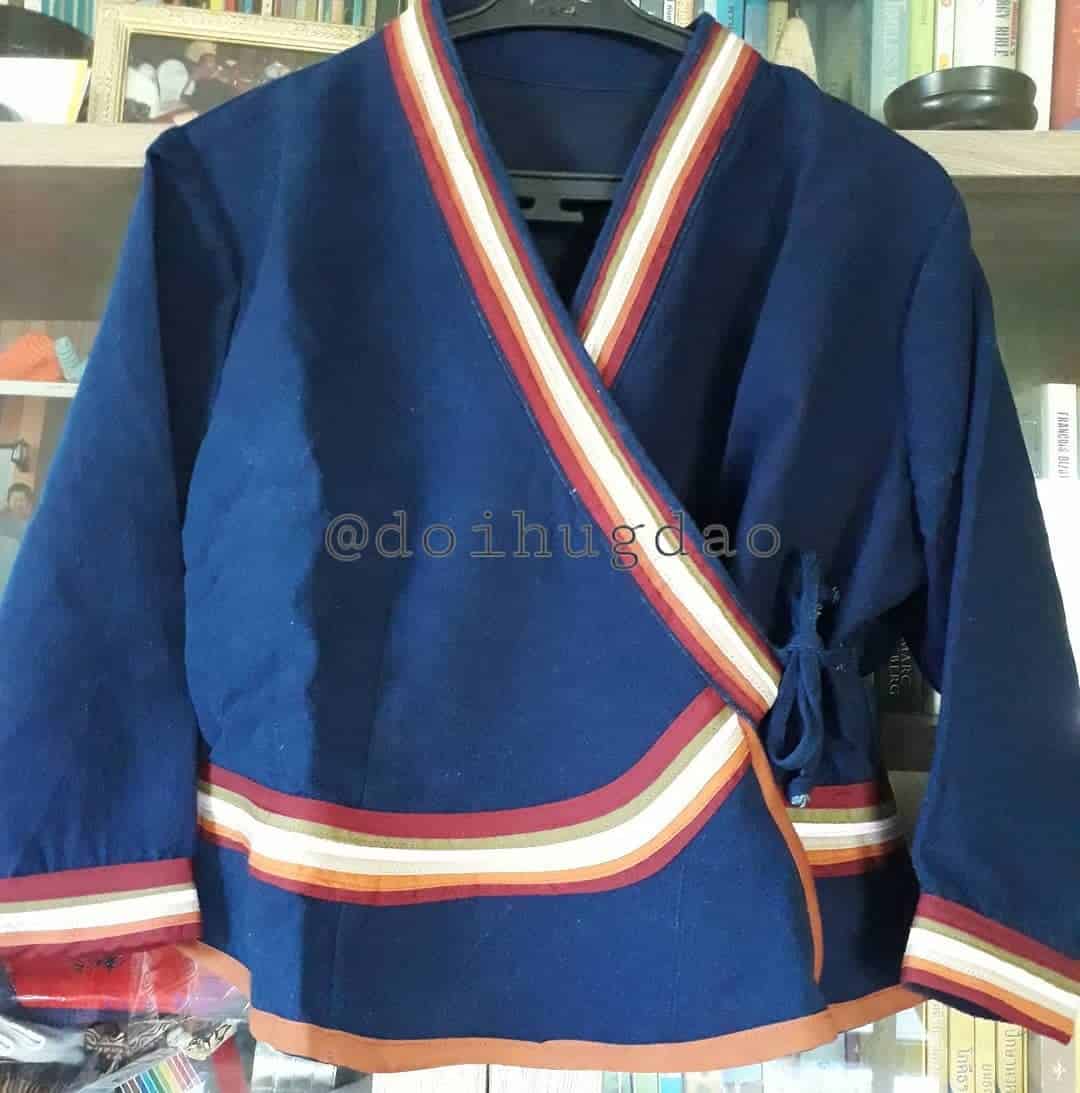
↓ 8 – Sinh
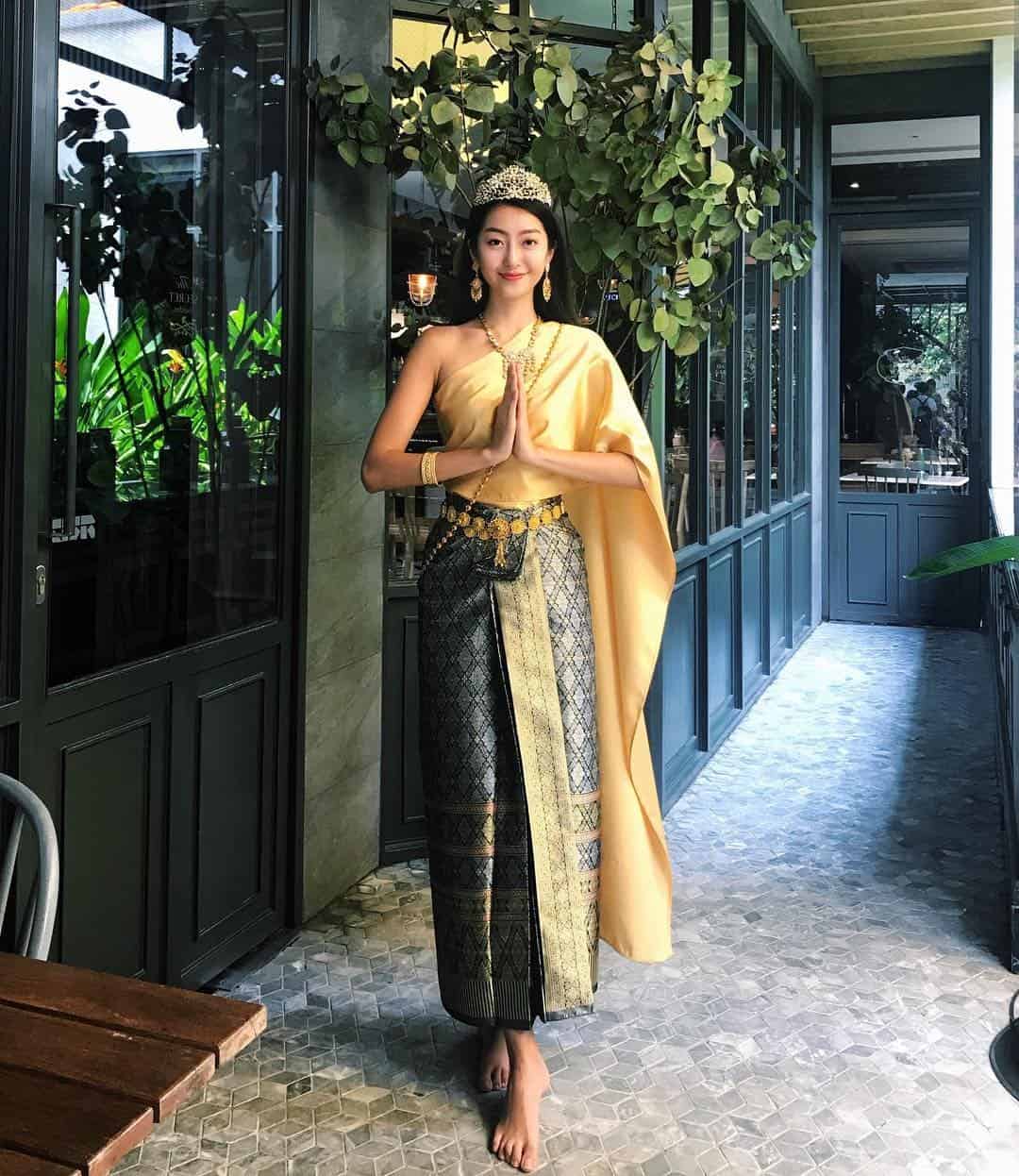
In Northern and Northeastern Thailand, a traditional garment called Sinh is an integral part of Thai women’s attire. This elegant tube skirt-like garment is typically made of silk and comes in various styles that vary depending on the region. While Lao women wear Sinh as part of their daily wardrobe, it’s reserved for special occasions in Thailand.
A Sinh has three distinct components: the hua sinh or waistband, which is tucked away to create a neat appearance; the phuen sinh or tua sinh, a plain and simple main section featuring no more than two colors; and the tin sinh, the hem that’s adorned with intricate embroidery and woven designs. These details can often reveal the ethnic origin of the Sinh.
↓ 7 – Ratcha Pataen
The Raj Pattern, also known as Ratcha Pataen, is a more modern traditional Thai suit that originated in the late 19th century. Its creation dates back to 1871, when King Chulalongkorn had it specially designed by a Calcutta tailor during his visit to British India. This unique ensemble typically features a jacket with a standing collar and buttoned-down opening, inspired by both Thai chong kraben and Western suit jackets.
Over time, the Raj Pattern has evolved into a national costume of Thailand, often worn on special occasions. In universities, it’s part of students’ uniforms, paired with straight trousers. Additionally, it serves as dress uniform in civil and military services.
↓ 6 – Suea Phraratchathan
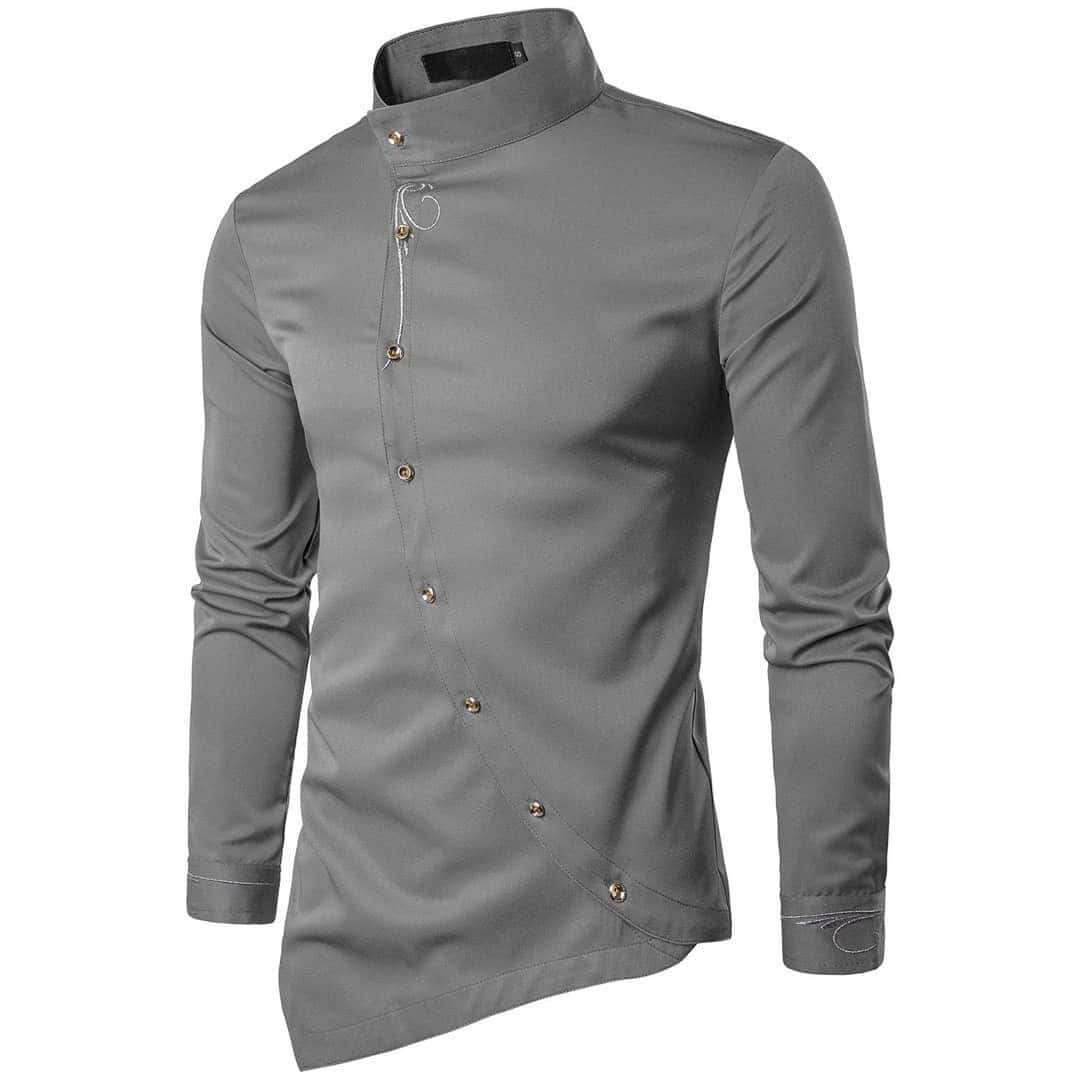
In Thailand, Suea Phraratchathan is a revered national costume for men, bestowed upon them by royalty. This iconic attire was designed in 1979 and has since been championed by government officials and military personnel. Its popularity has grown significantly over the years, with even Thai grooms donning this outfit on their big day.
Interestingly, Suea Phraratchathan drew inspiration from the Raj Pattern jacket, but with a distinctive twist – its collar measures almost 4 centimeters in length, tapered at the sides and finished with a neat hem. Not only is the collar meticulously trimmed, but also the sleeves and placket, giving the overall look a touch of elegance. Five round buttons adorn the sleeves, carefully matched to the shirt either by color or material.
The sleeves themselves come in three distinct styles: short sleeves for casual affairs, long sleeves for more formal occasions, and long sleeves with a sash for added flair. The formality of the outfit is largely dictated by the sleeve design. When worn with trousers, Suea Phraratchathan exudes a sense of tradition and cultural pride.
↓ 5 – Chut Thai Chakkri
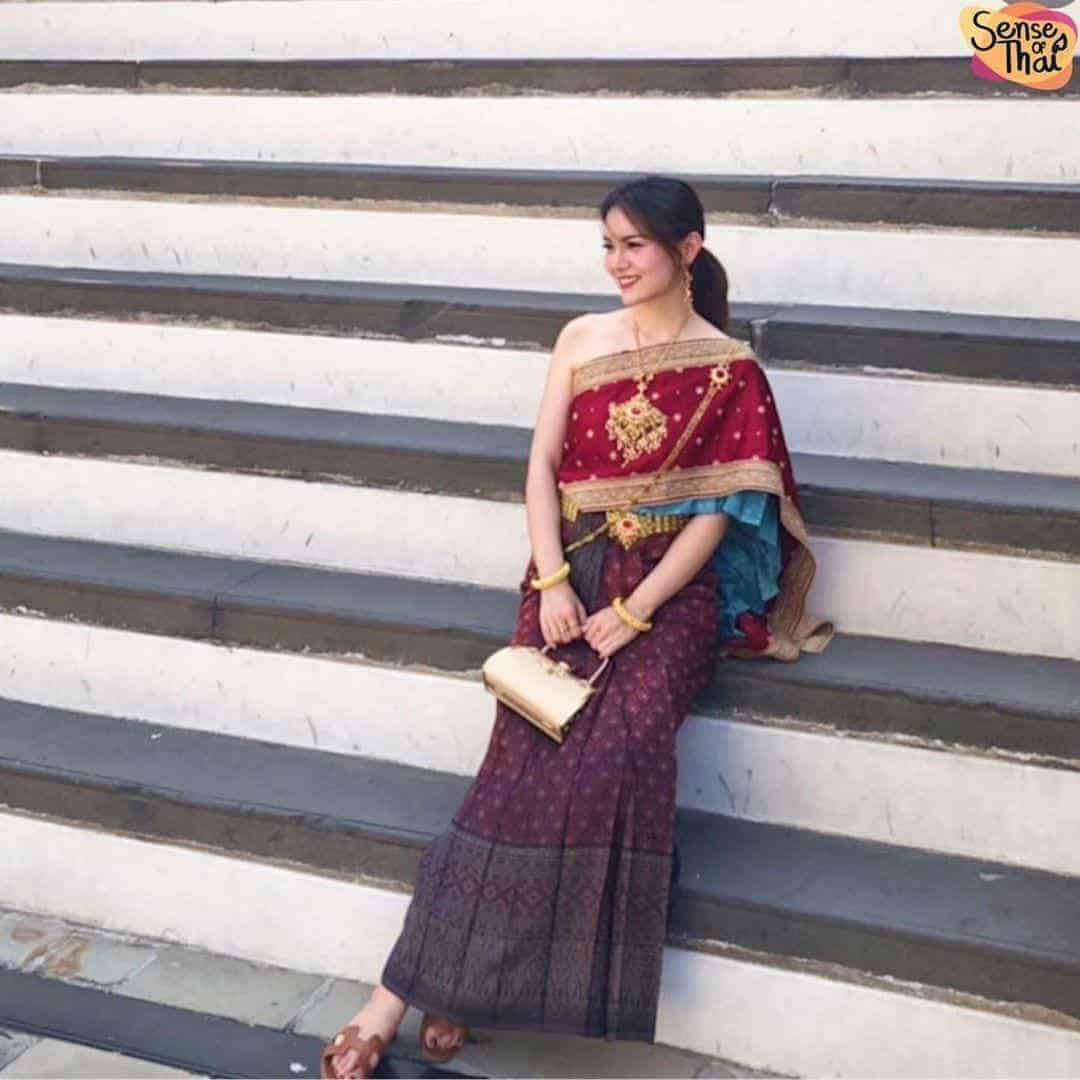
Chut Thai Chakkri is a staple of Thai women’s formal attire, holding significant cultural importance as one of Thailand’s national dresses. The intricate weaving process known as ‘yok’ gives the outfit its unique charm, often accentuated by the subtle addition of golden or silver-colored threads. This added touch elevates the overall formality and value of Chut Thai Chakkri.
Characterized by a flowing long skirt wrapped around the waist with two distinct folds, the Sinh – a term that translates to ‘skirt’ in Thai – completes this elegant ensemble.
↓ 4 – Chut Thai Boromphiman
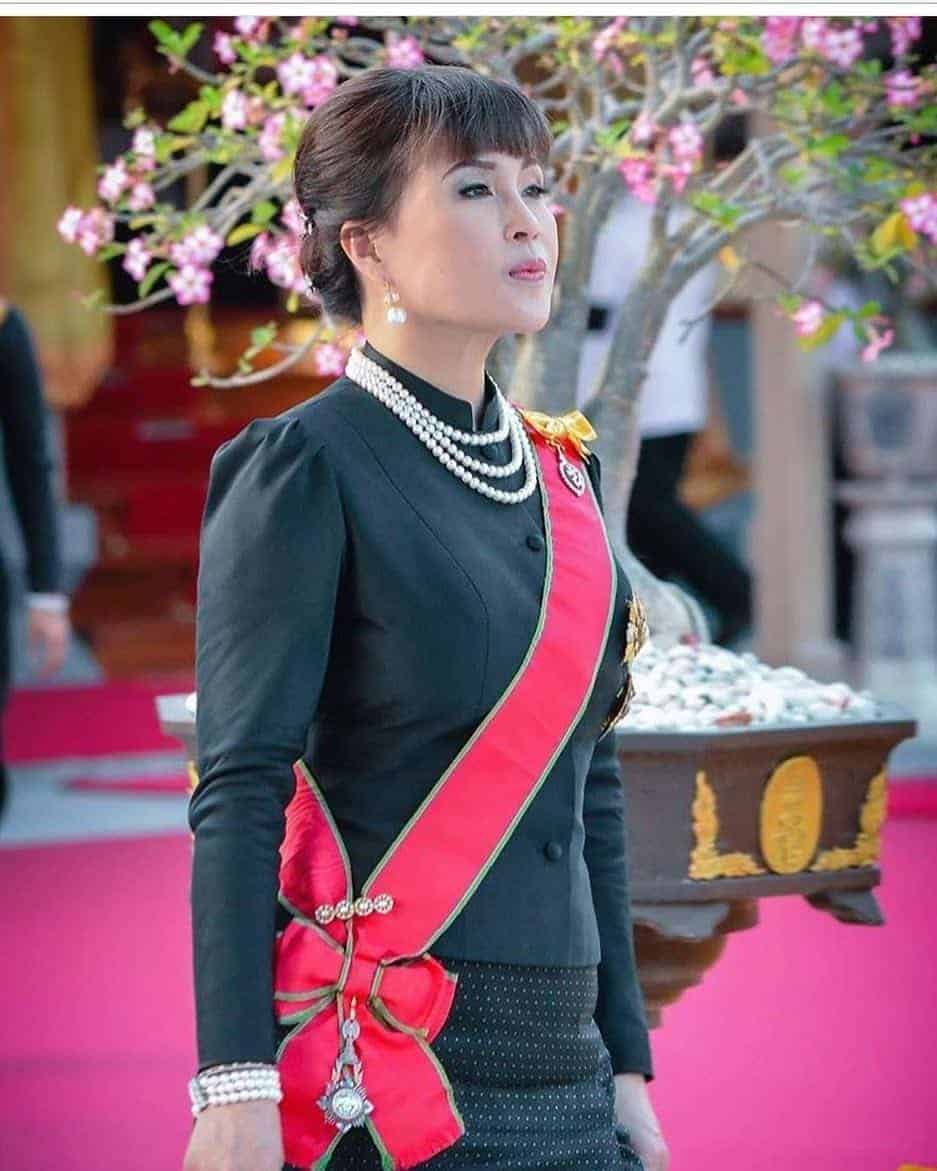
Chut Thai Boromphiman is a traditional women’s garment that consists of a long-sleeved blouse with vertical buttoning, typically found at the front or back. This elegant blouse is designed to be worn under a sinh, a flowing skirt that falls just below the ankles. The unique feature of this garment is its seamless combination with the sinh, making it a convenient and stylish option for semi-formal events like the League Ceremony.
Characterized by a simple round neckline, Chut Thai Boromphiman exudes an air of sophistication and refinement, making it a popular choice among women who value timeless elegance.
↓ 3 – Chut Thai Siwalai
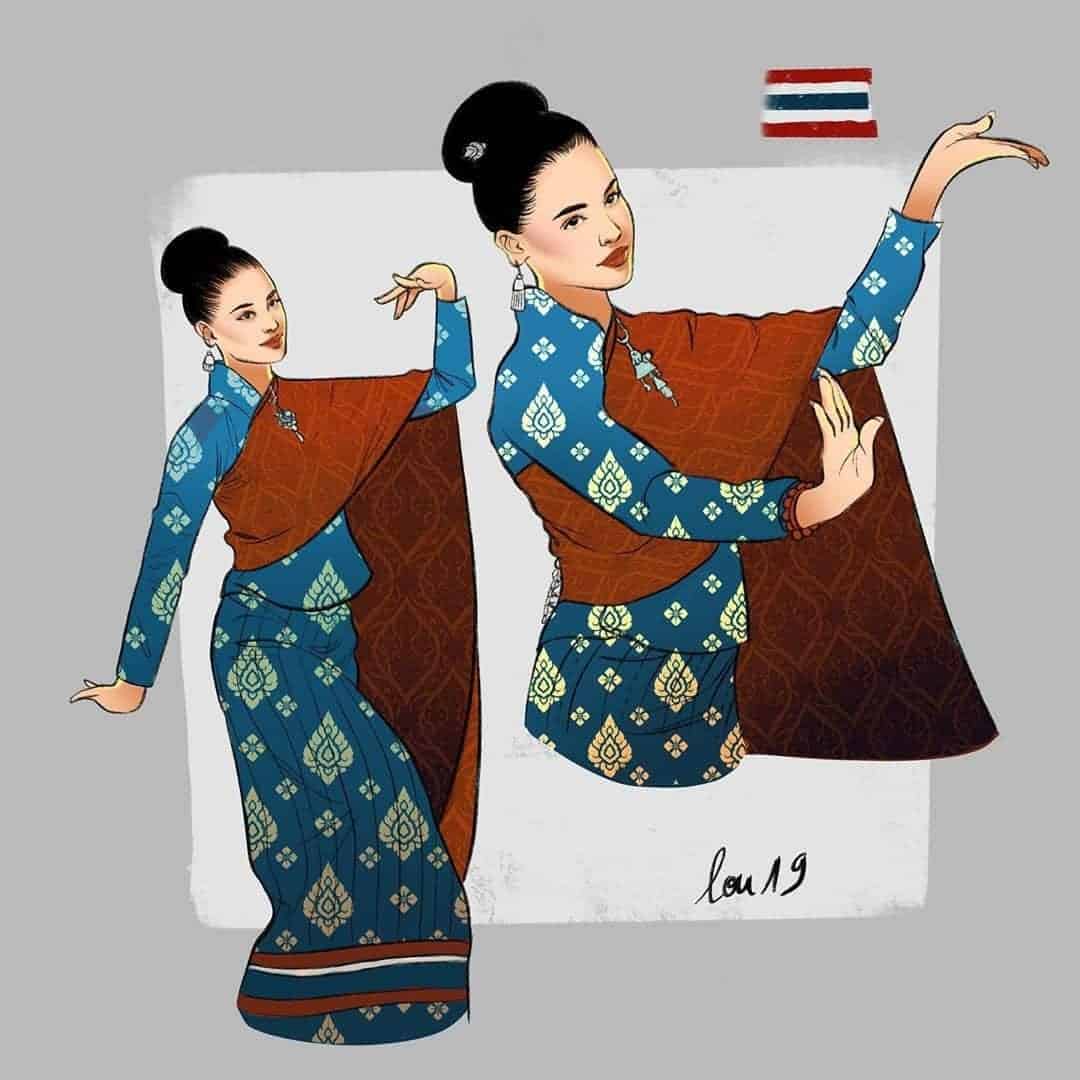
Similar to Chut Thai Boromphiman, Chut Thai Siwalai is a popular traditional outfit among Thai women. It’s often worn to formal events and ceremonies, showcasing its cultural significance. A distinguishing feature of Chut Thai Siwalai is the over-shoulder sbai, a shawl-like garment that provides an extra layer of modesty for the wearer.
While visually striking, with vibrant colors and prints reminiscent of traditional African Kitenge outfits, it’s the subtle addition of the sbai that sets Chut Thai Siwalai apart from its counterpart, Boromphiman.
↓ 2 – Chut Thai Amarin

Chut Thai Amarin, a staple in Thailand’s formal wear scene, exudes a more relaxed charm compared to its other national outfits. Specifically designed for evening events, this attire features a brocade sinh and a casual blouse with elbow-length sleeves, offering a perfect blend of elegance and comfort.
↓ 1 – Chut Thai Chitlada
This event-worthy dress is designed for daytime events, featuring a brocaded band adorning its hemline. Meanwhile, Char Thai Chitlada pairs perfectly with a silk blouse boasting five ornate buttons along its front panel – available in either silver or gold hues. Notably, this outfit strikes a balance between elegance and informality, making it suitable for occasions that call for a touch of sophistication, such as receiving royalty at the airport.
